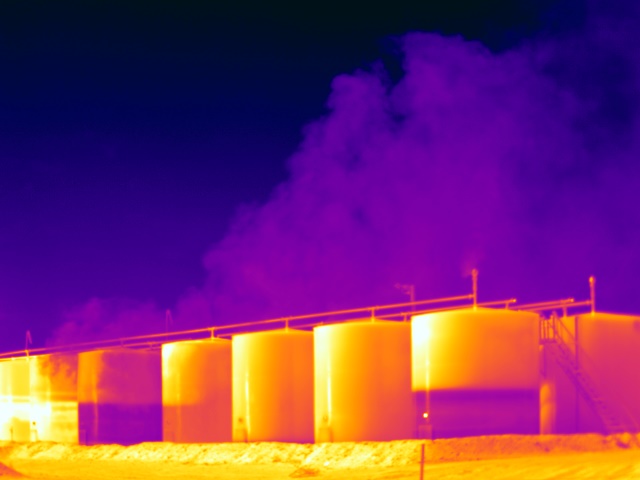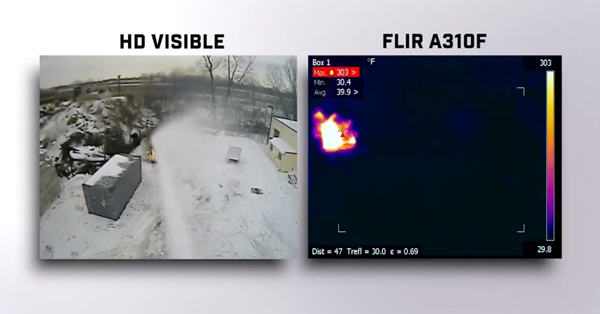OGI Camera Resolution: Less is Often More

There has been a lot of talk recently about resolution for optical gas imaging cameras, specifically around high resolution OGI cameras. As the global leader in optical gas imaging camera manufacturing since introducing the technology in 2005, Teledyne FLIR offers both high-resolution and low-resolution solutions in our OGI Portfolio. We’re often asked “Why would you offer two resolution cameras when higher resolution is obviously better?”
When considering resolution for an optical gas imaging camera, you should understand that less is often more. Resolution has some unique advantages, but when considering the core function of an optical gas imaging camera — to visualize gas leaks — a lower resolution camera is often better to get the job done.
When looking at the physics of an infrared camera in general, having fewer pixels allows for a more sensitive detector and a lower noise equivalent temperature difference (NETD). With optical gas imaging, the specifications are slightly different. These specifications, often referred to as noise equivalent concentration length (NECL), are discussed in a paper on FLIR’s website. What this means to a leak detection and repair (LDAR) operator using an OGI camera is that the camera can detect smaller leaks easier in most environments.
Lower resolution cameras with higher sensitivity operate better at close range where most LDAR operators usually focus their inspections. Since many LDAR operators stay between five and ten feet away from components when doing OGI surveys, a higher resolution camera isn’t always necessary.
Some applications for OGI cameras include the ability to detect small leaks for regulatory purpose. As an example, the U.S. Environmental Protection Agency defines optical gas imaging as the Best System of Emissions Reduction (BSER) in the 40 CFR Part 60, Subpart OOOOa regulation and provides a minimum leak size of 60 g/hr for a methane/propane mix. A lower resolution camera with more sensitivity towards gas detection will see these leaks easier and have a better operating envelope. That said, higher resolution cameras can meet the specifications of these regulations with slightly more restrictive operating envelopes.
Why does FLIR offer a higher resolution camera when lower resolution cameras are better at detecting small leaks? There are some instances where using higher resolution cameras are advantageous. The most obvious advantage is the quality of the recorded video, as you’ll have a clearer view with more pixels. But for the use of the camera in the field, the main reason is to visualize larger leaks more accurately and from great distances. If you cannot access the leak at close range and need to stay “beyond the fenceline” for imaging, using a higher resolution OGI camera could be a great option. Another potential advantage is using a high-resolution camera for quantification as there are more pixels to choose from when analytically quantifying an emission.

Don’t be fooled by simple statements about “highest definition optical gas imaging cameras in the market” and think that “bigger is better.” Make an informed decision on your next capital purchase. At
FLIR, we understand that there are different customers with different needs and we offer a variety of solutions to meet those needs. In addition to multiple resolutions, we also have a broad feature stack in our cameras, including touchscreen LCD, routing capabilities, and quantification inside the camera. Let us know how we can help you with your optical gas imaging means.


